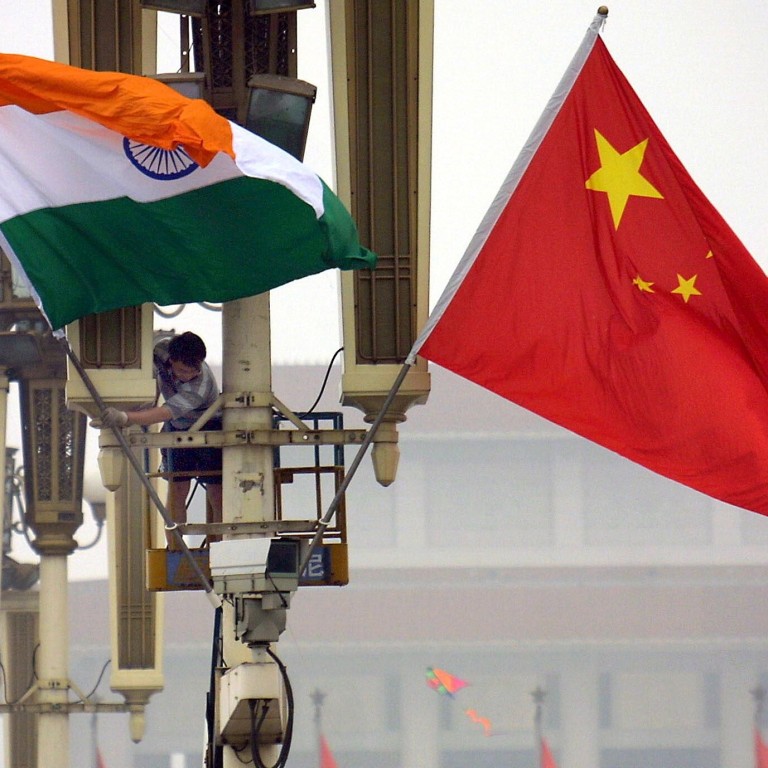
China using border tensions to warn India not to side with US: ex-foreign secretary Shyam Saran
- The former diplomat said Beijing’s recent moves, including its Hong Kong security law, suggest it will be ‘more assertive post-pandemic’
- India will head the WHO Executive Council and may influence two critical issues for Beijing: a coronavirus investigation and Taiwan’s observer status
Saran, who served in the government of former prime minister Manmohan Singh and was his special envoy on matters ranging from US nuclear cooperation, climate change and India-Nepal ties, singled out two issues that had prompted the warning amid a deepening clash between Beijing and Washington.

The two countries fought a short but intense war in 1962 and there have been regular blow-ups since then, but with no bullets fired. Analysts agree this latest episode appears more serious, with both sides accusing each other of incursions and responding by sending reinforcements to the Line of Actual Control.
On Sunday, India’s defence minister Rajnath Singh admitted to the tensions at the border – the first such statement by the country’s political establishment. In an interview with a news channel, he also signalled that India was unlikely to pull its troops back even as the two countries engaged diplomatically and militarily.
Is China-India border dispute being fuelled by rising nationalism?
In the last two days, social media has been rife with unverified videos showing Chinese and Indian troops engaging in bloody physical fights and eyeball-to-eyeball confrontations in an unidentified location, believed to be Ladakh. The Indian Army called them “unauthenticated” and said there was “currently” no violence on the border.
India’s social media has also seen calls to boycott Chinese products, especially Chinese mobile applications, after popular Ladakh-based education reformer Sonam Wangchuk asked people to punish China’s economic interests through the “wallet, not bullet power”.

Saran headed the National Security Advisory Board, which advises the prime minister on national security and strategic interest issues, in 2013 when it oversaw a detailed report on the infrastructural disparities between China and India along the Line of Actual Control.
In the last decade, India has made attempts to strengthen its infrastructure in these areas. Saran, currently a Senior Fellow at the Centre for Policy Research, a New Delhi think tank, believes the border tensions could also be linked to these Indian attempts to boost its infrastructure.
“The road and highway network on the Chinese side is much more extensive and since the Tibetan plateau is mostly flat, mobility is better. On the Indian side, several high mountains must be crossed for access to the LAC. There is a significant asymmetry in the quality of border infrastructure, which India has been attempting to address.”
India will defend its ‘pride’ in China border flare-up, minister says
Saran was foreign secretary between 2004 and 2006 and played a key role the 2005 “Agreement on the Political Parameters and Guiding Principles for the Settlement of the Boundary Question”, a landmark document signed by India and China providing a framework for resolving their vexed seven-decade-old border dispute.
The agreement laid out an 11-point plan which took into account historical and geographical factors as well as the interests of the population in these disputed areas. Both countries also agreed to carry out field surveys and make “meaningful adjustments” to their respective positions on the dispute.

But Indian media reports quoted unnamed military sources as saying that Chinese forces had entered Indian territory by as much as one to three kilometres, while the Global Times described the Galwan Valley as Chinese territory, despite the area not being disputed by Beijing previously.
Saran said this was worrying as the Galwan Valley was “always acknowledged as being on the Indian side of the LAC”. The intrusions suggested “coordinated action orchestrated at a senior level”, he said.
“The agreement provided a set of consensus principles for settling the border issue. However, China has walked back from this consensus. Its current posture and large claims on Indian territory prevent a mutually acceptable solution.”
The way the stand-off has played out on the ground is also concerning, he said. “The level of violence, even though no shots were fired, was unusual, as is the scale of troop build-up.”
My own sense is that China is risking overextension.
Saran said he believed Beijing’s recent actions – including its move to implement national security legislation for Hong Kong and the nationalistic reactions by “Wolf Warrior” diplomats and state media to perceived unfair criticism of China – suggested the world’s largest economy would be “even more assertive … post-pandemic”.
“This will invite countervailing actions not only from the US but other countries as well. Some pushback is already visible in Africa and in Southeast Asia. My own sense is that China is risking overextension,” he added.
“China’s constant refrain is that India must acknowledge that China’s economy is five times the size of India’s and therefore the dynamics of the relationship are bound to change. Just as there is a demand for equivalence with the US there is an expectation of deference from India,” he said.
India denies that Trump spoke to Modi about border tensions with China
[But] there is no room for a hierarchical order with China as the uncontested leading power. Not in Asia, not in the world.”
If New Delhi felt Beijing was seeking to make new territorial claims in the current border dispute, it would affect trust and the ability to keep ties on an even keel, he warned.
“An attempt by China to change the facts on the ground and then talk peace would not be good faith,” Saran said.

